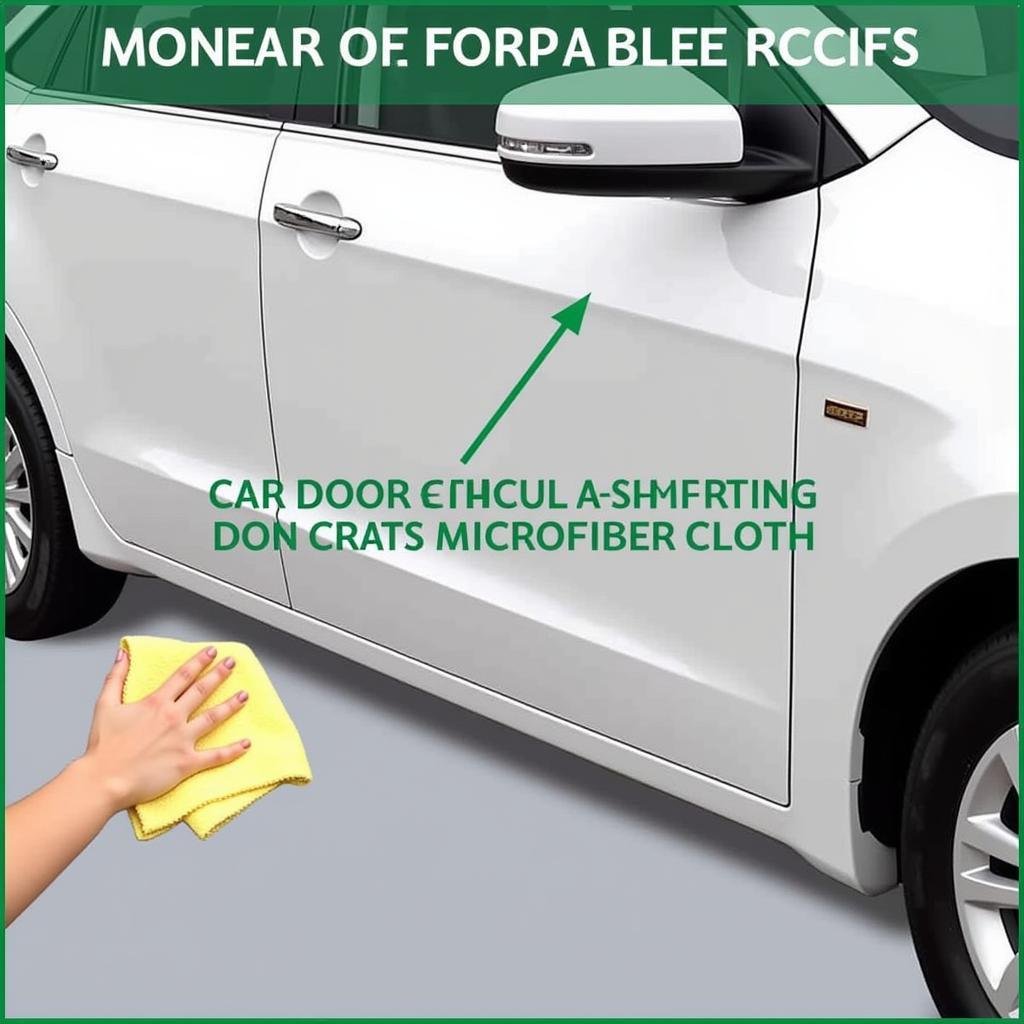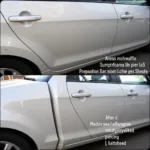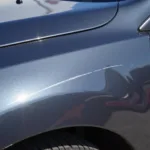Rub marks on your car door paint can be a frustrating eyesore. Whether from a careless brush with a shopping cart, a rogue tree branch, or even just the regular wear and tear of parking, these blemishes detract from your car’s appearance. Luckily, removing them is often easier than you think. This guide will walk you through how to repair rub marks on car door paint, from identifying the damage to restoring your car’s finish to its former glory.
Removing rub marks is often a straightforward process, especially if the damage is superficial and hasn’t penetrated the clear coat. We’ll explore different methods, ranging from simple DIY solutions to more advanced techniques for deeper marks. By understanding the nature of the damage and employing the right approach, you can effectively address those annoying rub marks and keep your car looking its best. Let’s dive in.
how to repair shopping car scratches in your cars paint
Identifying the Type of Rub Mark
Before you start the repair process, it’s crucial to assess the damage. Rub marks can range from light scuffs to deeper scratches. Identifying the severity will help you choose the most effective repair method.
Light Scuffs and Rub Marks
These are typically superficial and only affect the top layer of the clear coat. They often appear as light, hazy marks and can sometimes be removed with simple cleaning techniques.
Moderate Rub Marks and Scratches
These marks penetrate deeper into the clear coat and may even reach the color coat. They are more visible and require more than just a wash to remove.
Deep Scratches and Gouges
These marks go through the color coat and sometimes even reach the primer or bare metal. They require more extensive repairs, often involving touch-up paint and potentially professional assistance.
DIY Solutions for Removing Rub Marks
For light to moderate rub marks, several DIY solutions can be effective. These methods are generally inexpensive and can be performed at home.
Washing and Waxing
Sometimes, a thorough wash and wax is all it takes to remove superficial rub marks. Use a quality car wash soap and a microfiber wash mitt. After drying, apply a coat of car wax to protect the paint and enhance its shine.
Rubbing Compound
For more stubborn rub marks, a rubbing compound can be used. This abrasive paste helps to remove the top layer of the clear coat, effectively leveling out the surface and eliminating the rub mark. Apply a small amount to a microfiber cloth and rub gently in a circular motion.
Polishing Compound
After using a rubbing compound, a polishing compound can help to refine the finish and restore the paint’s gloss. This is a less abrasive product than rubbing compound and is designed to smooth out any remaining imperfections.
Scratch Remover Products
Several commercial scratch remover products are specifically designed to address rub marks and light scratches. These products often contain a combination of abrasives and fillers that help to remove the mark and blend it with the surrounding paint.
 Applying Rubbing Compound to Remove Rub Marks
Applying Rubbing Compound to Remove Rub Marks
When to Seek Professional Help
While many rub marks can be addressed with DIY methods, some situations require professional help.
Deep Scratches and Gouges
If the scratch has penetrated through the color coat, professional repair is typically necessary. This may involve sanding, priming, painting, and clear coating the affected area.
Extensive Rub Marks
If your car has numerous rub marks or if the affected area is large, it might be more efficient and cost-effective to have a professional detailer address the issue.
Preventing Rub Marks
Preventing rub marks is always easier than repairing them. Here are some tips to keep your car’s paint looking pristine.
- Careful Parking: Park away from shopping carts, trees, and other potential hazards.
- Regular Washing: Regular washing removes dirt and grime that can scratch the paint when rubbed.
- Waxing and Sealing: Applying wax or sealant creates a protective layer that helps prevent scratches and rub marks.
- Use a Car Cover: A car cover can protect your car’s paint from scratches, UV rays, and other environmental factors.
how to repair a small scratch on a car paint
Conclusion
Knowing how to repair rub marks on car door paint can save you money and keep your car looking its best. By assessing the damage and using the appropriate techniques, you can often remove these blemishes yourself. However, remember that deeper scratches and extensive damage may require professional attention. With proper care and preventative measures, you can minimize the risk of rub marks and maintain your car’s pristine appearance.
FAQ
- Q: Can I use toothpaste to remove rub marks? A: While toothpaste can sometimes remove very light scuffs, it’s not a reliable solution for most rub marks.
- Q: How often should I wax my car? A: Waxing every three to six months is generally recommended.
- Q: Can I repair deep scratches myself? A: Repairing deep scratches effectively usually requires professional expertise.
- Q: What’s the difference between rubbing compound and polishing compound? A: Rubbing compound is more abrasive and removes a thin layer of clear coat, while polishing compound is less abrasive and refines the finish.
- Q: How do I know if a rub mark has penetrated the clear coat? A: If the mark is white or a different color than your car’s paint, it has likely penetrated the clear coat.
- Q: Can I use household cleaners to remove rub marks? A: Avoid using household cleaners as they can damage your car’s paint.
- Q: Is it necessary to wash my car before using rubbing compound? A: Yes, washing your car removes any dirt and debris that could further scratch the paint during the repair process.
Need more help with car paint repair? Check out our other articles: car paint scuff repair.
Need assistance? Contact us via WhatsApp: +1(641)206-8880 or Email: [email protected]. Our customer service team is available 24/7.


